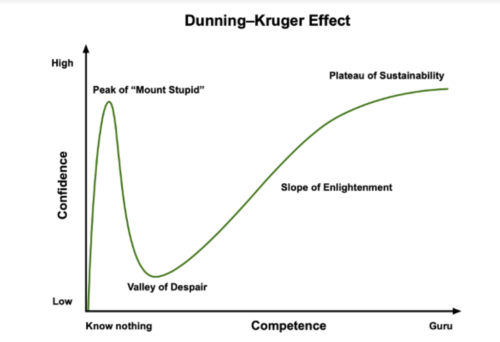
Kaizen in Everything. But Why?
“The only true test of intelligence is if you get what you want out of life.” – Naval Ravikant
It’s the health and fitness industry’s newest fad. Everywhere you look, you’ll see someone either practicing meditation, performing some strength exercises with a fancy type of exhale or attempting a new breath-training protocol that’s supposed to make you healthier, stronger and cure cancer all at once.
However, I’m not here to unequivocally bash it. Although it’s taken to extremes in many cases, I believe that unlike most fads, a focus on breathwork is here to stay for the long haul. Why is that you may ask? First, I’m going to explain why it’s taken over our social media channels of late, outline the legitimate benefits of such work, and give my own perspective on when and where it can offer the most benefits as an intervention, for the least amount of effort.
In an industry that still puts value on the 4am rise and grind mentality, it would be easy to bash any conversation around mindfulness, as soft, wishy-washy bullshit. However, it’s impossible to give an informed opinion on a topic, if you’ve not been fully educated on it.
In my youth, I would’ve believed that mindfulness and meditation, and the revival of the techniques in the mainstream, was an absolute waste of time. How could not taking action against the conditions that caused my anxiety, cure my anxiety? These new-age, revamped remedies for problems caused by modern society seemed ridiculous to me.
In my previously held view, the only way that I could solve a problem was by taking ownership and doing something about it. Alas, this mentality only seems to breed more anxiety, as there will always be something else to worry about and something else that can be done. So, a younger version of myself would hate me for saying it, but although it’s not for everyone, meditation and breathwork do seem to work, in the majority of cases.
And it’s not just in the psychological realm that we can see benefits as a result of these techniques. There’s clear physiological benefits that can be derived from adopting regular breathwork practices. Not to mention, it’s probably the single, easiest practice that the general population can adopt, in order to improve their health. We literally do it every second of every day, so it’s a no-brainer to make a conscious effort, to optimise the way in which we do it.

Whether it’s the Buteyko, or another trendy method, all of them pretty much preach the same idea. Control the amount of air that you’re taking in. The easiest way to do this is to reduce your breath-rate by limiting the amount of mouth-breathing you do at rest. Nasal breathing is an easy method that you can use to decrease your heart rate and stimulate the parasympathetic nervous system. In layman’s terms this basically means, “relax my G”.
By putting our bodies in a state of relaxation, we can reduce our stress and anxiety levels, which in turn may have positive hormonal effects on the body. By not being in this perpetual state of “fight or flight”, we can also react to any stimulus more rationally and refrain from making an ill-informed response, which may land us in any more trouble. Sounds like that’s just what’s needed to avoid any future anxiety.
Nasal breathing before bed can also enhance our sleep quality, which then leads to us performing at a more optimal state of readiness the following day. We all know that sleep is the best form of recovery, so why would you not want to optimise that facet of your life, for optimal functionality.
It’s obvious that reducing your heart rate at rest is an incredibly easy way to have a positive effect on the CV system. However, breathwork can also be a useful tool to elicit some additional changes in the body related to our fitness. Whether you’re performing breath-holds akin to those of Wim Hof or Buteyko methods, you’ll almost certainly become better able to tolerate higher carbon dioxide levels in the blood. Now the most obvious benefits here may come to deep-sea divers, but being better able to tolerate CO2 can only be a positive in sports where you will eventually have to perform under some form of fatigue.
Controlling breath-rate can also be a useful way of gauging intensity during steady-state aerobic exercise. A rule of thumb that can be used is if you’re looking to train at a relatively low intensity, you should be able to breathe solely through your nose throughout. Medium intensity would then be nasal inhalations and exhalations through the mouth, whilst mouth only breathing should be saved only for high intensities. Get better at nasal breathing during aerobic exercise, and you’ll more than likely improve your aerobic fitness.
So, I’m not one of those coaches that will have many of my clients perform an excessive amount of breath-control work during their workouts. I’m not going to bring out the balloons and waste an unnecessary amount of time trying to make the weight-room look like it’s being prepared for some toddler’s birthday party.
However, in the last year, my eyes have been opened to the utility of some of these techniques within a rehabilitation setting. Waterford native, David Grey, is able to explain the rationale behind his techniques extremely clearly and concisely. Having trialled many of them first-hand, I can truthfully say that they do work, given the right scenario.
The basis behind said techniques pertain mostly to the orientation of the rib-cage and pelvis. Given the fact that we use our limbs to move, and our limbs are attached to our axial skeleton, it doesn’t take a rocket scientist to decipher that any slight change to these bones, can have a major impact on how we move up and down the chain.
As outlined earlier, being in a state of perpetual stress can lead to us breathing solely through the mouth. Chronic mouth-breathing can thus lead to some maladaptive postural changes, which can then lead to compensatory patterns and chronic injuries throughout the human body.
To oversimplify it massively, mouth-breathing is typically shallow and brings the air to the chest, this then may lead to a forward head-tilt and kyphosis of the thoracic spine. As a result, we may experience shoulder, neck or back pain.
As well as this, the spinal column runs the whole way down through the body, which means that any abnormality, must be compensated for elsewhere. In this case, kyphosis of the T-spine will lead to lordosis of the Lumbar spine, which then leads to an anterior pelvic tilt. As a result, the body will move in compensatory patterns which in turn may lead to injury in the lower limb, at the hip, knee or ankle.
Sorry to be extremely scientific and negative in my use of language, but that’s basically the gist of it. So, breathe more deeply using your nasal cavity, and you may just improve your posture.
So, where do I think the most practical and useful opportunity for breath-work presents itself to coaches? It’s obviously at the very end of the session. Now I’m not suggesting we all get into a circle, hold hands and sing Kumbaya. However, post-exercise, we’re often told that a cool-down is the best thing for us if we are to optimize our recovery. So then what are we really going to lose out on, if we take five minutes or less at the end, to focus on attempting to actively decrease both our breathing and heart rate. We’ll hopefully leave the gym in a state of relaxation, rather than driving home ready to jump out of the car and do a few more hill-sprints for good measure.
It also affords the athlete the time to reflect on the quality of the work that they’ve just completed. They’ll likely leave the facility with a sense of accomplishment, and a feeling of satisfaction, which will hopefully lead to a less stressful evening ahead, thus optimising the recovery process.
In summary, it’s not just a load of hippy-dippy flowers and hash-pipes. Sometimes it is better to just take a moment, and breathe.

“The only true test of intelligence is if you get what you want out of life.” – Naval Ravikant

So, we can see that when it comes to our training, a certain volume of work when paired with adequate recovery is positive for our development, but if that same intensity of work is mismanaged and spiked, then the same exercise intensity can be toxic to the athlete.

Unfortunately, it takes a fall from the peak of mount stupid, on top of the Dunning-Kruger curve, for many of these lessons to land home.
Here to help you achieve your health and performance goals.
At Petey Performance, I’ll assist you every step of the way. What’s stopping you?
Take ownership today.
© 2021 All Rights Reserved
Subscribe to Petey Performance and get updates on new posts plus more exlusive content.